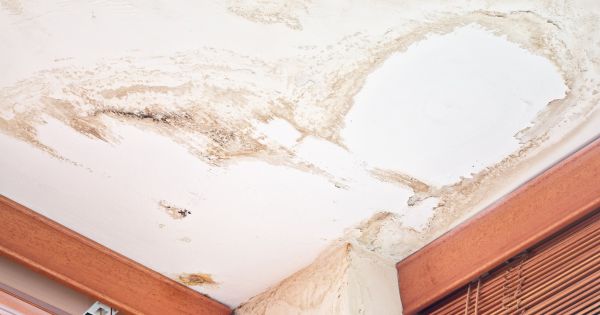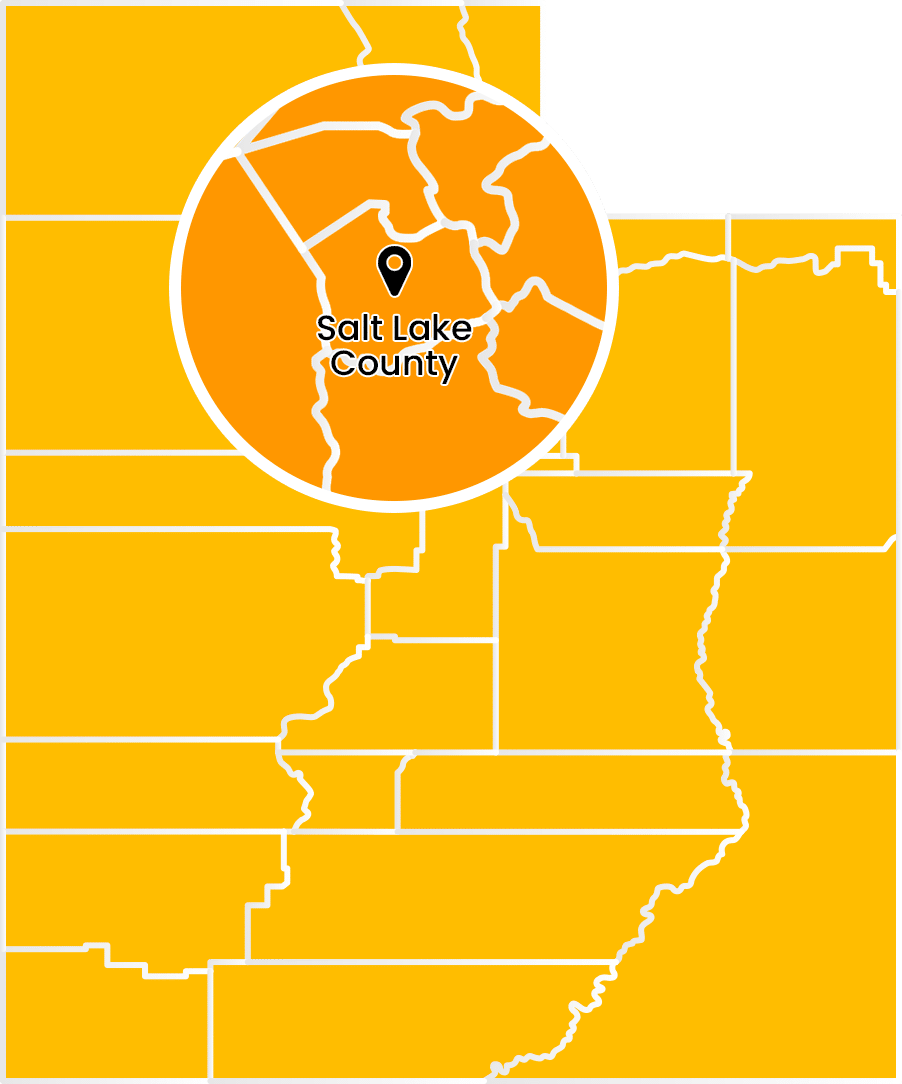Water damage can wreak havoc on a home, especially when it soaks up the ceiling. Even if it’s minor ceiling water damage, it can lead to structural issues and mold growth if left untreated. We will guide you through the signs, causes, repair, and prevention of ceiling water damage. Plus, if you need water damage restoration Draper, we’ve got you covered.
Identifying Ceiling Water Damage
Detecting water damage is vital for fast intervention and mitigation. Here are the common signs of water damage on ceilings to look out for:
- Discolored Patches: Water stains on the ceiling often appear as discolored patches, ranging from light yellow to brown. These stains indicate water has soaked the ceiling material and caused discoloration due to moisture absorption.
- Sagging or Bulging: Excessive moisture can cause the ceiling material, such as drywall or plaster, to sag or bulge. This distortion is a clear indication of water damage, as the material becomes weakened and loses its structural integrity.
- Peeling or Bubbling Paint: When water seeps into the ceiling, it can cause the paint or wallpaper to peel or bubble as it separates from the surface. This occurs due to the moisture weakening the adhesive bond between the paint and the ceiling material.
- Musty Smell: Lingering musty or damp smells in the room may indicate the presence of mold or mildew resulting from prolonged moisture exposure.
- Visible Mold Growth: Mold develops in damp, humid environments, making water-damaged ceilings prone to mold growth. Look out for green, black, or brown spots on the ceiling, which indicate active mold growth. Mold can pose health risks and should be tackled quickly.
- Dripping or Leaking: In severe cases of water damage, water may actively drip or leak from the ceiling. This is a clear sign of water seepage and requires immediate attention to prevent further damage and potential safety hazards.
- Soft or Wet Spots: Gently press on different areas of the ceiling to check for softness or moisture. Soft or wet spots indicate saturation of the ceiling material with water, signaling active water damage that needs to be tackled quickly.
What Causes Water Damage in Ceilings?
Understanding the underlying causes of ceiling water damage is essential for successful prevention and mitigation. Here are the common culprits:
- Leaky Roof: A damaged or poorly maintained roof can allow water to seep into the attic and subsequently soak up the ceiling. Common causes of roof leaks include missing or damaged shingles, deteriorated flashing, clogged gutters, or cracked roofing materials. Rainwater can enter through these spots, leading to water damage to ceilings below.
- Burst Pipes: Frozen pipes, excessive water pressure, corrosion, or age-related deterioration can cause pipes to burst, releasing a significant amount of water into the home. Burst pipes located in ceilings or overhead spaces can result in extensive water damage to the surrounding areas, including ceilings, walls, and floors.
- Plumbing Issues: Faulty plumbing fixtures, such as leaking pipes, faucets, or appliances (e.g., water heaters, and dishwashers), can bring about water damage in ceilings. Small leaks or drips may go unnoticed for an extended period, allowing water to accumulate and enter the ceiling material, leading to deterioration and mold growth.
- Condensation Buildup: Improper ventilation or insulation in attics and roof spaces can result in condensation buildup, especially in regions with fluctuating temperatures. Condensation forms when warm, moist air comes into contact with cooler surfaces, such as the underside of the roof or attic ceiling. Over time, this moisture can saturate the ceiling material, causing water damage and encouraging mold growth.
- Severe Weather Events: Heavy rainfall, storms, hurricanes, or snowmelt can overwhelm roofing systems and drainage systems, leading to water seepage into the home. Roofing materials may become damaged under extreme weather conditions, allowing water to enter the roof and cause damage to the ceiling and interior spaces.
How to Approach a Ceiling Water Damage Repair?
Navigating the process of ceiling repair water damage requires a methodical approach to the underlying issues in detail. Each step plays a pivotal role in mitigating the damage, restoring structural integrity, and safeguarding against future complications. Let’s dive into it!
- Find and Stop the Source of the Water: Before starting with the repairs, it’s important to identify and tackle the source of the water intrusion to prevent recurring damage.
- Repair the Leak: Whether it’s fixing a leaking pipe or patching up a damaged roof, tackling the source of the water is key.
- Remove Damaged Materials: Remove any damaged materials such as wet insulation, ceiling tiles, or drywall to prevent mold growth and structural issues.
- Dry Everything Out: Thoroughly dry the affected area using dehumidifiers and fans to prevent mold growth and further damage.
- Repair the Ceiling: Once the area is dry, repair drywall ceiling water damage or any damaged plaster to restore the ceiling’s integrity.
- Prime and Paint: Apply a primer to seal the repaired area before painting to ensure a seamless finish and added protection against future water damage.
- Inspect for Damage: Thoroughly inspect the area to ensure all repairs are completed in the right way and to identify any hidden damage that may require further attention.
- Hiring a Professional: For complex or extensive water damage issues, you’ll need to hire an IICRC-certified water damage restoration service. These professionals have the expertise and equipment to properly assess and tackle water damage.
Prevention Strategies
Preventing ceiling water damage is more cost-effective and less stressful than dealing with repairs. Here are some preventive measures to safeguard your home:
- Roof Inspection: Regularly inspect your roof for leaks and damage.
- Plumbing System Maintainance: Maintain your plumbing system and tackle any leaks or issues on time.
- Proper Ventilation: Ensure proper ventilation in high-moisture areas like bathrooms and kitchens to prevent condensation buildup.
- Sump Pump Installation: Install a sump pump in basements or crawl spaces prone to flooding.
- Cleaning Gutters and Downsprouts: Keep gutters and downspouts clean and free from debris to prevent water backup.
Contact Summit Restoration for Professional Water Damage Restoration
When faced with ceiling water damage, fast action is crucial to minimize the extent of the damage and prevent costly repairs. As an IICRC-certified water damage restoration Draper service, Summit Restoration has the expertise and resources to restore your home to its pre-damaged condition before you know it. Contact Summit Restoration today for expert assistance.






